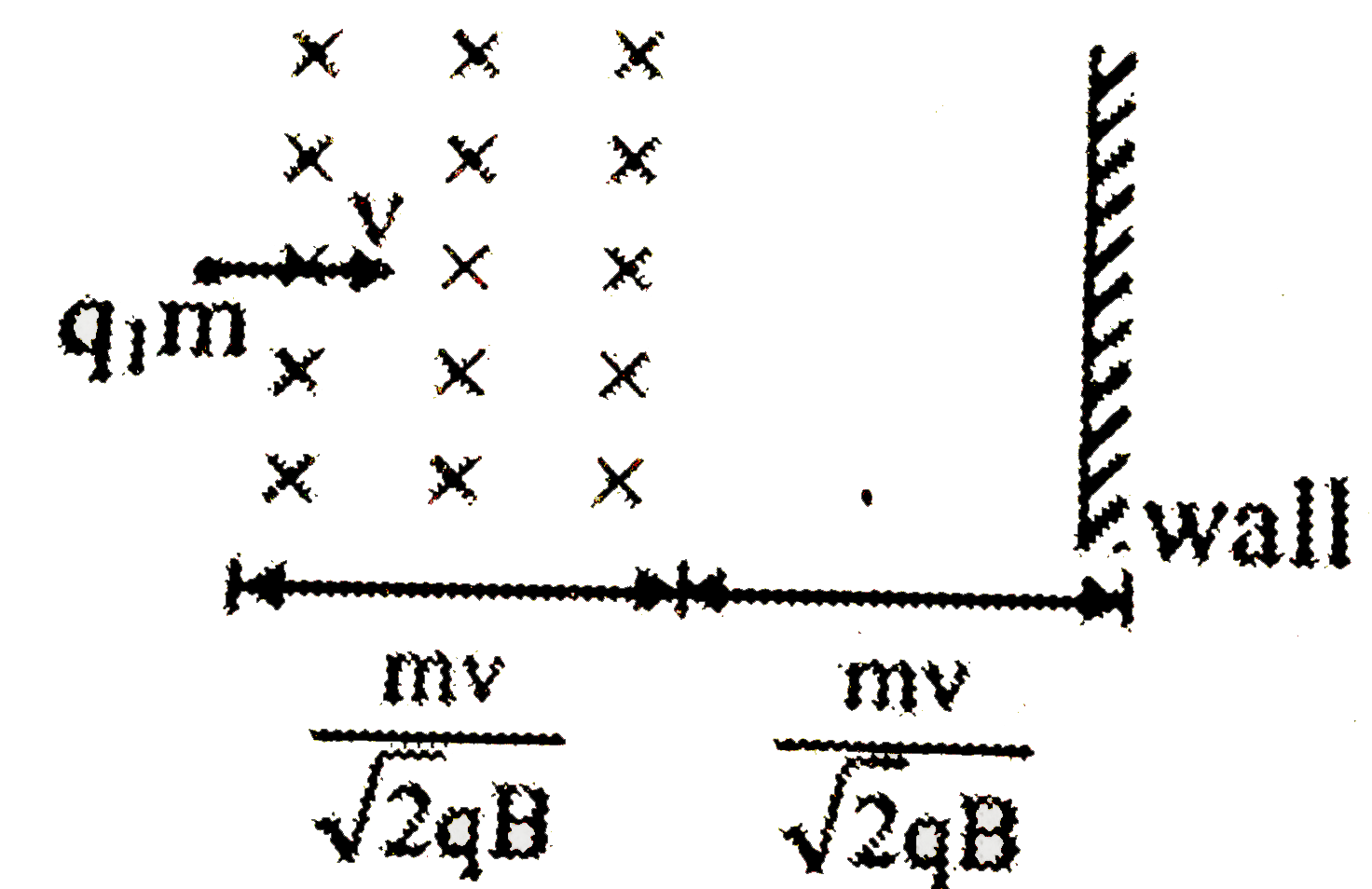There is region of space where uniform magnetic field of induction B exists. The field exists at all points for which coordingates are positive. The direction of field ia along negative z axis.
Now a certain charged particle of mass m and charge q a certain speed enters in this region. A magnetic field at a point whose coordinates are and . Magnetic force will start acting on the particle and particle moves in a uniform circular motion, such that origin becomes centre of circular path described by it
The particle enters into the region of magnetic field along a direction
parallel to axis
at an angle with axis
along axis
along a direction of with axis
The correct Answer is:C
Velocity will be along x axis
Topper's Solved these Questions
- MOVING CHARGES AND MAGNETISMBOOK - NARAYNACHAPTER - MOVING CHARGES AND MAGNETISMEXERCISE - Level =I (H.W)
42 Videos
- MOVING CHARGES AND MAGNETISMBOOK - NARAYNACHAPTER - MOVING CHARGES AND MAGNETISMEXERCISE - Level -II (H.W)
37 Videos
- MOVING CHARGES AND MAGNETISMBOOK - NARAYNACHAPTER - MOVING CHARGES AND MAGNETISMEXERCISE - LEVEL-V (SINGLE ANSWER QUESTION)
85 Videos
- MAGNETISM AND MATTERBOOK - NARAYNACHAPTER - MAGNETISM AND MATTEREXERCISE - EXERCISE - 4 (SINGLE ANSWER TYPE QUESTION)
17 Videos
- NUCLEAR PHYSICSBOOK - NARAYNACHAPTER - NUCLEAR PHYSICSEXERCISE - LEVEL-II-(H.W)
9 Videos
Similar Questions
Knowledge Check
There is region of space where uniform magnetic field of induction B exists. The field exists at all points for which x− coordingates are positive. The direction of field ia along negative z axis.
Now a certain charged particle of mass m and charge q a certain speed enters in this region. A magnetic field at a point whose coordinates are x=0,y=−d and z=0 . Magnetic force will start acting on the particle and particle moves in a uniform circular motion, such that origin becomes centre of circular path described by it
The speed of the charge particle will beAqBmBqdmCqbd2mDqBdmA charged particle enters a uniform magnetic field perpendicular to it. The magnetic field
Aincreases the K.E. of the particleBdecreases the K.E. of the particleCchanges the direction of motion of the particleDdoes both (a) and ( c)A particle of mass m and charge q enters a region of magnetic field (as shown) with speed v at t = 0. There is a region in which the magnetic field is absent as shown. The particle after entering the region collide elastically with a rigid wall. Time t after which the velocity of particle become antiparallel to its initial velocity is -
 Am(π+4)2qBBm4qB(π+2)CmqB(π+2)Dm4qB(2π+3)
Am(π+4)2qBBm4qB(π+2)CmqB(π+2)Dm4qB(2π+3)
A positively charged particle moving along x-axis with a certain velocity enters a uniform electric field directed along positive y-axis. Its
View SolutionPositively charged particles are projected into a magnetic field. If the direction of the magnetic field is along the direction of motion of the charged particles, the particles get
View SolutionA charged particle enters in a uniform magnetic field with a certain velocity. The power delivered to the particle by the magnetic field depends on
View SolutionPositively charged particles are projected into a magnetic field. If the direction of the magnetic field is along the direction of motion of the charged particles, the particles get
View SolutionA positively charged particle moving due east enters a region of uniform magnetic field directed vertically upwards. The partical will be
View Solution

